-
Paper Information
- Next Paper
- Paper Submission
-
Journal Information
- About This Journal
- Editorial Board
- Current Issue
- Archive
- Author Guidelines
- Contact Us
Journal of Safety Engineering
p-ISSN: 2325-0003 e-ISSN: 2325-0011
2013; 2(2): 11-19
doi:10.5923/j.safety.20130202.01
Textiles in Electromagnetic Radiation Protection
Subhankar Maity1, Kunal Singha2, Pulak Debnath2, Mrinal Singha3
1Department of Textile Technology, Dr. B. R. Ambedkar National Institute of Technology, Jalandhar, Punjab, India
2Department of Textile Technology, Panipat Institute of Engineering & Technology, Harayana, India
3Department of Pharmaceutical Chemistry, CU Shah College of Pharmacy & Research, Gujarat, India
Correspondence to: Subhankar Maity, Department of Textile Technology, Dr. B. R. Ambedkar National Institute of Technology, Jalandhar, Punjab, India.
| Email: |  |
Copyright © 2012 Scientific & Academic Publishing. All Rights Reserved.
This paper reports the need of protection from electromagnetic rays which have harmful effect on human brain and tissue as well as electronic devices and gadgets. Here textile materials have been explored as electromagnetic shielding protector. Though conventional textile materials are not suitable for this purpose, but modification of them in form of composites or other they can be used for this purpose. Various approaches of preparing textile electromagnetic shield have been described here with relative merits and demerits. Recent advancements of application of conductive polymers in the field of electromagnetic shielding are also taken into account. Conductive polymer treated textile materials showed superior electrical property as electromagnetic shield. Some commercial products available in market for shielding purpose are also reported here.
Keywords: Electromagnetic Rays, Electromagnetic Shield, Composites, Conductive Polymers, Electrical Property
Cite this paper: Subhankar Maity, Kunal Singha, Pulak Debnath, Mrinal Singha, Textiles in Electromagnetic Radiation Protection, Journal of Safety Engineering, Vol. 2 No. 2, 2013, pp. 11-19. doi: 10.5923/j.safety.20130202.01.
Article Outline
1. Introduction
- Electromagnetic shielding is the process of limiting the penetration of electromagnetic fields into a space, by blocking them with a barrier made of conductive material. Typically it is applied to enclosures, separating electrical devices from the outside world, and to cables, separating wires from the environment the cable runs through. Shielding is a very popular method of protecting electronic and electrical equipment and human beings against radiated electromagnetic energy. The materials or protector which protects a body, environment or a circuit from harmful electro-magnetic radiation is called shield. Shields are used either to isolate a space (a room, an apparatus, a circuit etc.) from outside sources of electromagnetic radiation, or to prevent the unwanted emission of electromagnetic energy radiated by internal sources. Traditionally, such shields are based on the use of stiff metallic materials with well-known electromagnetic properties. Plastics with a metallic coat or with metal fibres injected during the molding stage are used also. But they are still not flexible. Recently attention has been paid to light weight and flexible materials, such as textiles covered with conductive layer. These materials, owing to their flexibility, durability, ease of manufacturing and application, are considered promising for shield of electro-magnetic radiation[1]. The instant invention related to electromagnetic shielding fabrics, and more particularly fabric formed entirely of metal coated synthetic yarns. It is well known that exposure to long term or acute electromagnetic radiation can have harmful effects on human tissue, and furthermore, it is also known that electromagnetic radiation can interfere with certain bio-electronic devices, such as pacemakers, which are essential to the daily lives of affected people. The recent proliferation of electronic devices, such as cell phones, and computer equipment, that emit low levels of electromagnetic radiation, or interference, has significantly increased the problem and created a need of everyday shielding garments. In this regard, a variety of electromagnetic shielding fabrics, and garments formed produced in order to prevent electromagnetic radiations.
2. Mechanism of Electromagnetic Shielding
- When electro-magnetic rays pass through a medium or object then these rays interact with molecules of the medium or object. This phenomenon of interaction can be divided in three steps as below. ● Absorption attenuation.● Attenuation due to reflection and● Attenuation due to successive internal reflectionsAs the rays in forms of wave impinge the surface of the object, it forces charges in the object to oscillate at the same frequency of the incident wave. This forced oscillating charge behaves as an antenna and results in reflection. The entire signal is not reradiated in the direction of the incident wave, resulting in measured signal loss. The field is emitted in many directions in a pattern associated with a signal charge oscillating antenna, and hence the field is scattered. As the charge is forced to vibrate in the medium, energy is lost in the form of heat. This mode of signal loss is known as attenuation due to absorption. Thus, electromagnetic shields work on the basis of the above mentioned two major electro-magnetic mechanisms such as reflection from a conducting surface, and absorption in a conductive volume. An electro-magnetic wave striking a metallic surface encounters both types of loss. Part of the wave is reflected, while the remainder is transmitted and attenuated as it passes through the media. The combined effect of these losses (reflection and absorption) determines the effectiveness of the shield as shown in figure 1. Reflection from an electromagnetic shield results when the impedance of the wave in free space is different from the impedance of the electromagnetic wave in the barrier. This phenomenon is independent of the barrier thickness and is a function of the material’s conductivity, magnetic permeability, and frequency. Absorption in an electromagnetic shield transforms electromagnetic energy into thermal energy. Electromagnetic shields made of electromagnetic absorbers attenuate undesirable electromagnetic waves and substantially dismiss electromagnetic radiation. The shielding can reduce the coupling of radio waves, electromagnetic fields and electrostatic fields, though not static or low-frequency magnetic fields such as conductive enclosure used to block electrostatic fields is known as a Faraday cage. The amount of reduction depends very much upon the following factors.● The material used● Material thickness● The size of the shielded volume● The frequency of the fields of interest and the size and, shape● Orientation of apertures in a shield to an incident electromagnetic field
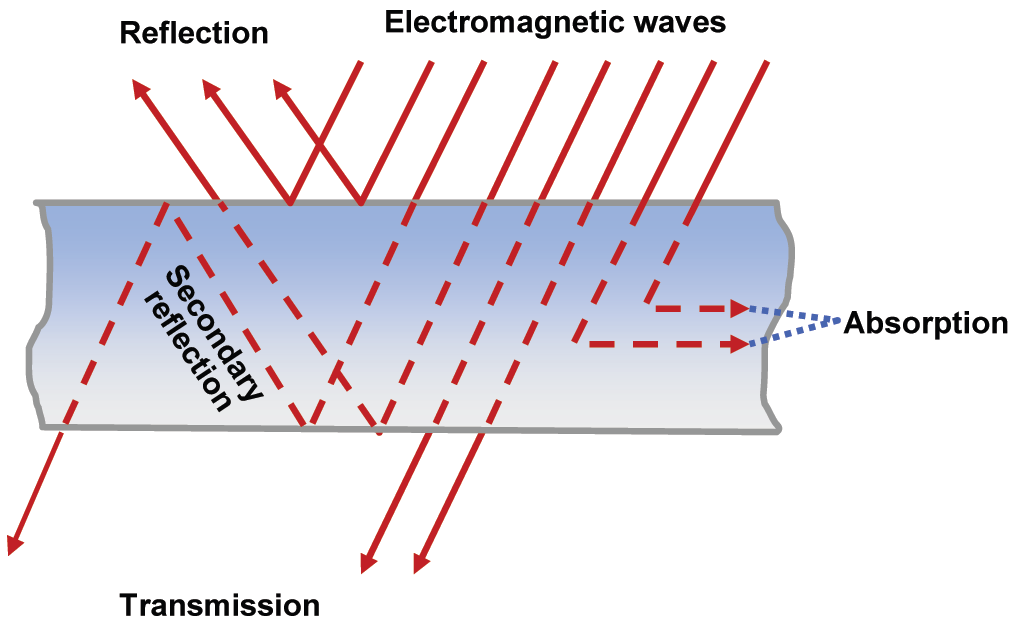 | Figure 1. Schematic representation of shielding phenomena |
3. Electromagnetic Shielding Efficiency
- Electromagnetic Interference Shielding Efficiency (EM SE) value expressed in dB is defined as the ratio of the incident to transmitted power of the electromagnetic wave. Mathematically -
 Where P1(E1) and P2(E2) are the incident power (incident electric field) and the transmitted power (transmitted electric field), respectively.By measuring the reflectance (Re) and the transmittance (Tr) of the material, the absorbance (Ab) can be calculated using following equation.
Where P1(E1) and P2(E2) are the incident power (incident electric field) and the transmitted power (transmitted electric field), respectively.By measuring the reflectance (Re) and the transmittance (Tr) of the material, the absorbance (Ab) can be calculated using following equation.  Where, Re and Tr are the square of the ratio of reflected (Er) and transmitted (Et) electric fields to the incident electric field (Ei), respectively, as following
Where, Re and Tr are the square of the ratio of reflected (Er) and transmitted (Et) electric fields to the incident electric field (Ei), respectively, as following 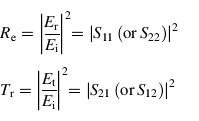 These S factors can be measured by instruments to evaluate absorbance.
These S factors can be measured by instruments to evaluate absorbance.4. Different Methods of Shielding
- We can protect ourselves or else from electromagnetic radiation by covering with an electro-conductive media which can generate and transport free charges. It is known that artificial fibers, for example, polyester fibers, polyamide fibers, polyacrylic fibers and cellulose acetate fibers, exhibit a very poor electric conductivity and one highly hydrophobic. Therefore, when an artificial fiber mass is rubbed, static electricity is generated and accumulates on the fibers. Sometimes, the voltage of accumulated static electricity reaches a very high level of several kilovolts. This phenomenon results in various annoyances, that is, items of apparel cling to the body and are attracted to other garments; fine particles of lint and dust are attracted to a fabric; the frequency of required cleaning is increased; and a jolt or shock is experienced upon touching a metallic article after walking across a carpet. Also, the above-mentioned accumulation of static electricity on the fiber mass is dangerous that is, the discharge of static electricity result in a spark capable of igniting flammable mixtures, such as an ether-air mixture, which are commonly found in hospitals, especially in operating rooms. It is also known that natural fibers, such as animal hairs and silk, exhibit a relatively high hydrophilic property and this property causes the natural fibers to exhibit a relatively high electric conductivity at a relatively high humidity due to a relatively high content of moisture absorbed in the natural fibers. This moisture content can avoid the above-mentioned annoyance and danger which is derived from the accumulation of static electricity. However, when the natural fibers are placed in an atmosphere of low humidity, static electricity will build up on the fibers, so as to cause the above-mentioned annoyance. The most effective manner for preventing the above-mentioned undesirable phenomena is to utilize fibers having a high electrical conductivity[2]. But these ordinary non-conductive materials do not serve as effective electromagnetic shield. For this purpose, metallic fibers, fibers plated with a metal, fibers containing therein carbon black as an electrically conductive material and fibers coated with a polymeric dope containing an electrically conductive material are known as electrically conductive fibers are used. However, conventional electrically conductive fibers are not necessarily satisfactory for practical use. For example, metallic fibers exhibit a very poor recovery from bending and are easily broken when processed or used. The breakage results in a decrease in the conductive effect of the metallic fiber. Also, it is difficult to mix spin, mix weave or mix knit the metallic fibers with organic polymer fibers. Further, the metallic fibers have a color which is sometimes undesirable for textile use. In case of a fiber plated with a metal, it is required to form a uniform, continuous plated metal layer on the surface of the fiber. In order to satisfy the above-mentioned requirement, the surface of the fiber is required to be smooth and highly polished.In order to prepare a continuous layer of plated metal possessing a uniform thickness, it is necessary to carefully and accurately carry out the plating operation. The requirement causes the cost of the plating operation to be very high. Also, the metal-plated fiber is disadvantageous in that the plated metal layer is easily peeled off from the fiber during processing or use, and has a poor durability in use and a metallic color which is sometimes undesirable for textile use. The fiber coated with a polymer dope containing an electrically conductive material, for example, carbon black and silver particles, is disadvantageous in that the coating operation is expensive and the coating layer is easily peeled off from the fiber during processing. In order to provide the fiber containing therein carbon black as an electrically conductive material and having a proper conductivity, it is necessary that the carbon black is contained in a large amount of at least 15% based on the weight of the fiber matrix polymer. This large amount of carbon black causes the fiber-producing process to be difficult, complex and expensive. Also, it is impossible to contain the carbon black in the inside of the natural fibers. Furthermore, the carbon black-containing fiber has a gray or black color which is sometimes undesirable for textile use. The latest development is the applications of intrinsically conductive polymers such as polyacetylene, polyanylene, polypyrrole, polythiophene etc. on textiles. These conductive polymer treated textiles showed satisfactory and promising results for application of textiles in electromagnetic shielding.
4.1. Metalizing of Textile Fabric
- Textile fabrics had been coated with metals such as copper, nickel, silver and combination of thereof since last two decades in industrial scale. The coating method employed mainly was chemical method[1, 18, 20]. The metallization of fibres and fabrics is usually based on methods such as laminating with aluminium foils, dyeing with copper sulfide or electroless plating with certain metallic components. Electroless metal plating is a non electrolytic method of deposition from solution which is explainable by mixed potential theory, a combination oxidation and reduction processes[3]. The driving force for this reaction arises from the potential difference that exists between metal solution interface and equilibrium electrode potential for the cathodic and anodic half reaction. In a typical electroless plating system, copper reduction and formaldehyde oxidation are cathodic and anodic reactions respectively. Plating is initiated upon catalysed surface, and is sustained on the catalytic nature of the metal of the surface. This method has advantages such as coherent metal deposition, excellent conductivity and shielding effectiveness, applicability to complex shaped material and non-conductors so that it applies to all fibre substances.Surface modification and coating of fabrics using Physical vapor deposition (PVD) technologies is relatively new[4]. There are only a few industrial applications known. Cu-sputtered nonwovens have been used as wallpaper for electromagnetic shielding. More recent developments are Ti or TiC-coated SiC fibres for composites. PVD coatings of woven or nonwoven fabrics are also an important step in producing a variety of new thin film composites for new applications. Depending on the evaporation conditions, PVD coated fabrics can present quite different surface properties. Reactive metal deposition induces both textural and chemical changes at the substrate surface. Some products from metalized fabric are Flectron (Monsanto, presently APM, USA), Shieldex (Siemens, Germany), REMP (REMP, Switzerland), Shintron (Shinto Chemitron Co. Ltd., Japan) etc. The shielding efficiency of these metalized textile fabrics mainly works in principle of energy reflection and not its absorption. In many cases, such a phenomenon is not satisfactory. Hence, there have been searches for materials with greater capability of absorbing electromagnetic radiation. In recent years many patents have appeared which deal with the problem of producing textile fabrics with ferromagnetic properties[1]. Such products can be applied as flexible screens for attenuating electromagnetic radiation, to produce cores in transformers, motors, generators, etc., and to produce filters to remove substances showing magnetic properties from air and water. Ferromagnetic textile fabrics can be produced by spreading suitable substances on surfaces, or by their introduction into fibre polymers.The copper wire and stainless steel wire were wrapping with polyamide filaments to reduce the friction and tenacity during weaving and knitting process, enabling the successful weaving and knitting of hybrid conductive yarn, RTCY namely. The co-woven-knitted fabric and woven fabric were fabricated with RTCY to reach desired electromagnetic shielding properties[5]. Figure 2 shows the effect of single and multilayer fabrics fabricated by Stainless Steel/Polyester (SS/PET 40/60) spun yarn on shielding effectiveness. The multilayer lamination of various thickness and SS fiber content are responsible for blocking the electromagnetic interference in different frequency[5].
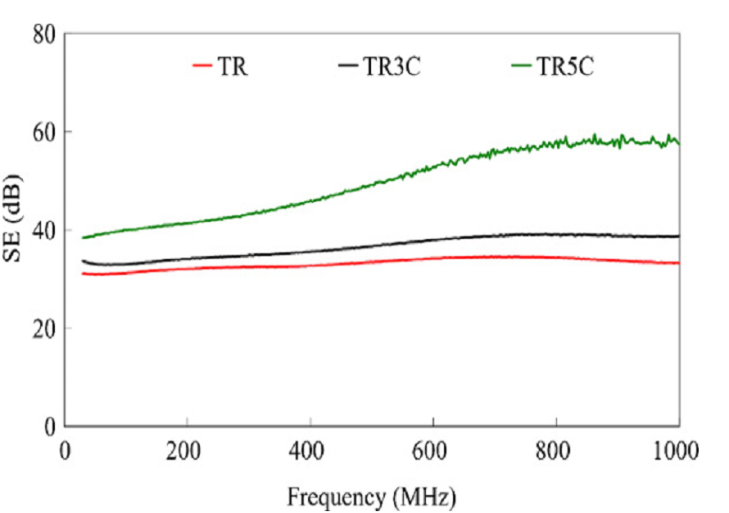 | Figure 2. Shielding effectiveness of various layers laminated with SS/PET (40/60) woven fabrics[5] |
4.2. Nonwovens for Electromagnetic Shielding
- Eelectromagnetic interference shielding effectiveness of polypyrrole coated polyester nonwoven textiles was studied in the frequency range 100 to 800 MHz. A correlation between the shielding effectiveness and the surface conductivity of composites was found. For the sample with the lowest surface was resistivity electromagnetic shielding effectiveness of 37 dB was reported[21]. Materials with a shielding efficiency above 15 dB can be produced by electro-conductive coating of nonwoven textiles. To improve shielding efficiency, stitch-bonded nonwovens incorporating electro-conductive fibres can be coated with a polymer layer containing different inorganic compounds as absorbers. Powdered substances can be spread onto electro-conductive nonwovens, for example by coating with a paste containing a bonding agent and absorbent material. The different compositions of Cu/Zn/Sn coated Polyester nonwoven (CNW) and Ni/Cu coated polypropylene nonwoven (SNW) show various SE depending on incident frequency as shows in Figure 3. The thickness of CNW is thicker than that of SNW. The fabric CNW having higher shielding effectiveness can be attributed to different metal composition and thickness[5].
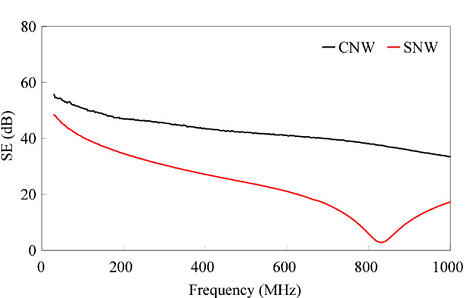 | Figure 3. Shielding effectiveness of various metalized nonwovens[5] |
4.3. Knitted Fabric for Electromagnetic Shielding
- The literature indicates that knitted fabric reinforced polymer composites are suitable for making complex shaped components. Moreover, they display good impact energy absorption characteristics. Hence, in this study conductive polymer composites were made using knitted fabric reinforcement. Polypropylene (PP) was chosen as the matrix material and knitted glass fibers as the reinforcement[7]. Copper wires or staple yarns were incorporated as conductive fillers to provide the composite material with the desired EMI SE properties. The various steps followed to produce conductive knitted fabric composite materials are described. The EMI SE of knitted composites is greatly influenced by the amount of copper in the compo site material, which can be varied by changing the knit structure, stitch density and linear density of yarns used for knitting and inlaying. In another study weft-knitted structures are produced using copper wire/cotton incorporated yams. Four knitted constructions such as plain knitting, weft in-laid plain knitting, 1×1 rib, and weft in-laid 1×1 rib are formed into knitted structures with conductive yams. All samples show higher EM shielding performance in the frequency range of 27-500 MHz than of 500-3000 MHz[8]. Structure of specimens (woven or knitted), ratio of copper wire in the content of yarn, number of fabric layers, reference dB value of generated signals are found influential parameters affecting EMSI. Thin copper wire containing yarn has higher EMSE comparing those specimens produced using thicker copper wire yarns. Double layer of specimen has better EMSE then the single layer of specimens[9].
4.4. Coating Textiles with Conductive Polymer
- Conducting polymers are a new class of materials with an extensive delocalization of p-electrons conjugated network with wide applications in number of technologies such as energy storage, molecular recognition EMI shielding and ESD LED–opto-electronic devices and corrosion protection[10, 16, 19, 20]. Conducting polymers generally show highly reversible redox behavior with a distinguishable chemical memory and hence been considered as prominent new materials for the fabrication of industrial devices. The essential feature of the conducting polymers is that it provides p-bands of delocalized molecular orbital within which full range of semiconductors and metal behavior can be achieved through the control of the degree of band filling. Among conducting polymers, polyaniline and polypyrrole has received wide spread attention because of their environmental stability and moderate conductivity[17]. The hetero atom–N–presents in the polymer chain play an important role in the unique conduction mechanism. Conducting polymers are unprocessible due to the extensive delocalization of p-electrons. In order to solve the problem of unprocessibility in conducting polymers, different groups have prepared conducting composites by blending conducting polymers with insulating polymers so that the conducting composites retain the mechanical properties of the conventional polymers and electrical conductivity of the conducting polymers. Electromagnetic radiation is one of the unfortunate byproducts of the rapid proliferation of electronic devices. Due to the metallic conductivity and many other unusual properties, conducting polymers have become the focus of attention in material science. Therefore we thought it fit to study the coating of conducting polymers on insulating fabric, so that the coated fabric can be studied for their possible application as a new material for microwave absorption and in UV–Vis–NIR range. These materials show better performance than metal fibre and powder filled composites which are susceptible to galvanic corrosion or loss of conductivity due to friction. Various aspects on the preparation of coated fabrics by polymerizing aniline and pyrrole on the insulating surface are reported. Fabrics are taken to studies such as conductivity response with respect to temperature, thermal stability, reflectance studies in UV–Vis–NIR range and reflection/transmission tests in microwave range from 8 to 12 GHz, shielding behavior in RFI range and W-band (101 GHz) range. The polymerization of aniline and pyrrole on insulating fabrics like polyester cloth, glass fabrics and high silica cloth was carried out by in-situ chemical oxidative polymerization. The chemical polymerization of pyrrole in the presence of textile substrates results in the formation of electrically conducting, polypyrrole coated fabrics[11]. The conducting polymers investigated both reflect and absorb radiation, and generally have larger absorption levels than reflection. Shielding effectiveness of the order of 80-85% has been achieved.Polypyrrole (PPy) was polymerized chemically and electrochemically in sequence on a polyester (PET) woven fabric, giving rise to PET fabric/PPy composite with high electrical conductivity. The specific volume resistivity of the composite prepared in this study was extremely low as 0.2 Ωcm and EMI SE was in the practically useful range of about 36 dB over a wide frequency range up to 1.5 GHz as shown in figure 4. It was found that the composite shielded EMI by absorption as well as reflection and that EMI shielding through reflection increased with the electrical conductivity and 7% of the power of the incident electromagnetic wave was absorbed by the composite. It was reported that the PET fabric/PPy composite is practically useful for many applications requiring not only a high EMI SE but EMI shielding by absorption of the wave[12-13].
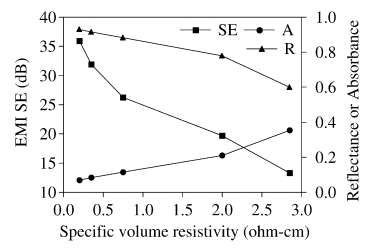 | Figure 4. EMI SE, absorbances, and reflectances of PET fabric/PPy com-posites with various specific volume resistivities[12] |
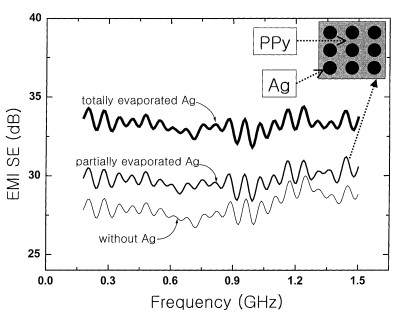 | Figure 5. EMI SE of fabric complex with various Ag evaporation layer[14] |
 | Figure 6. Shielding effectiveness of PPy film[15] |
5. Commercial Products
- Some useful commercial products for application of electromagnetic radiation shielding fabric are described here[22]. NaturaShield, it is a high performance shielding fabric with the crisp look and soft feel. Advance technology has created a fiber which has the conductive components on the inside, with pure natural cotton on the outside. The result is a fabric which is gentle to the skin, has a great feel, and still provides 20-35 dB from 100 MHz to 2.2 GHz, and residual performance is up to 10 GHz. Surface resistivity is 109 Ohm/sq[23].
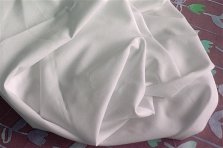 | Figure 7. NaturaShield fabric[23] |
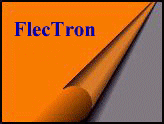 | Figure 8. FlecTron® Highest Conductivity Fabric Offering Exceptional E-field & EM Shielding[24] |
 | Figure 9. FlecTron®-N[24] |
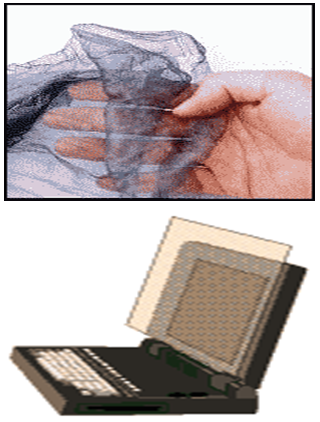 | Figure 10. See-Through Conductive Fabric[26] |
 | Figure 11. Phantom Fabric[22] |
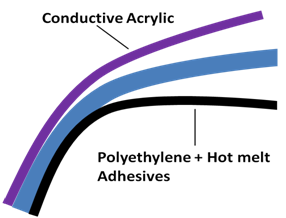 | Figure 12. Shieldit® Super shield fabric |
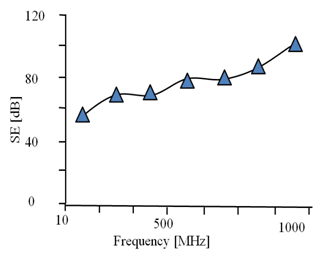 | Figure 13. Sheilding Effectiveness of ZELT FABRIC[22] |
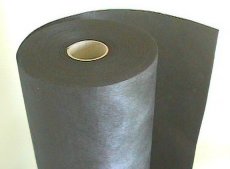 | Figure 14. Microwave Absorbing Sheet[22] |
6. Conclusions
- Exposure to long term or acute electromagnetic radiation can have harmful effects on human tissue, brain and can interfere with certain bio-electronic devices, such as pacemakers. The electronic devices, such as cell phones, computer equipments etc. emit low levels of electromagnetic radiation which has significantly harmful effects. Even electronic instruments, microprocessors, devices also affected by electromagnetic rays and produce erroneous results. In this regard a variety of electromagnetic shielding fabrics and garments are developed for suitable applications. Various approaches have been observed to prepare textile materials as electromagnetic shield. Conventionally metallic fibres were used in yarn and fabrics and afterwards metal coating was applied to textile materials. Then conductive particles such as copper, silver or even carbon particles were also applied to textile material by suitable techniques to prepare electro-conductive textiles for electromagnetic shield. In recent years conductive polymers such as polyacetylene, polypyrrole, polyaniline etc. are applied to textile materials and hence prepared composites are proven satisfactory results for protecting electromagnetic rays.
 Abstract
Abstract Reference
Reference Full-Text PDF
Full-Text PDF Full-text HTML
Full-text HTML